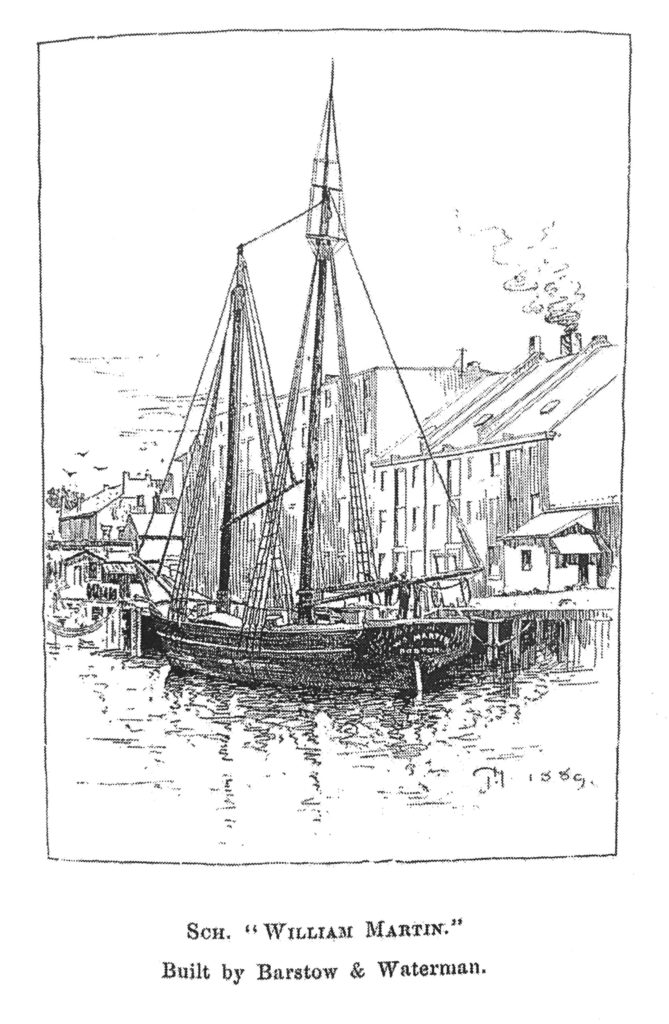This is a reprint of an article that appeared in the following newspapers: Pilgrim County Press, Duxbury Pilgrim, Marshfield Mail, Cohasset Cottager, Hanover Advance, Pembroke Colonist, Abington Advertiser, Scituate Herald and Norwell News
Friday, December 19, 1919
 Romance and Tragedy
Romance and Tragedy
By: Henry T. Claus
Transcribed and edited by Jane Estabrooks, June 2019
The story of North River is brilliant with romance and sad with tragedy. Out of the mouth of that little stream sailed ships manned by the hardy and intrepid mariners of old Massachusetts – men who gambled with death and sometimes won and sometimes lost. Over the sailors of today they had one great advantage. They knew the vessels they sailed because in many instances they had either helped build them themselves or seen them built by their fellow townsmen. They had implicit confidence in the workmanship of the men who fashioned them and in the seagoing qualities of that noted white oak which was indigenous to the district.
The river’s claims to fame were generally recognized as late as 1839 and in Hayward’s New England Gazetteer for that year there is this mention of Scituate and its environs: “North River is noted for the fine ships built on its banks; the value of vessels annually built being $40,000.
These vessels are of superior mechanism and are built of native white oak, remarkable for its durability. During the year ending April 1, 1837, Scituate had twenty-two vessels engaged in fishing, and took 6500 barrels of mackerel, valued at $46,000.
That native white oak of which the Gazetteer speaks was almost as famous as the ships that were made out of it. Reference to its sterling qualities is often found in histories of the day. It seems to have been there in great abundance, which is one reason perhaps why the shipbuilding industry of the district was able to flourish for so many years.
Scituate in 1633
Just when shipbuilding began on the river is not clear. It probably started, in a limited way, in 1633, when a fishing station was set up in Scituate. From that time on the fishing industry of the town was very important and it is only reasonable to assume that the need for ships for the fishermen encouraged a certain amount of building. In fact, the Briggs Yard at Hobart’s Landing dates from 1654 and the Scituate Harbor Yards from 1650. But the earliest ship of which there is definite record is the brigantine Swallow, 35 tons, built at the Briggs Yard in 1678. The sloop Desire came out of the same yard the same year. Once started, the progress of the industry was rapid, and prior to 1800 North River was known the world over; vessels were designated not as having been built at Scituate, Marshfield, Hanover, or Pembroke, but “on North River.” According to records compiled by Dr. L. Vernon Briggs, the largest number of ships completed on the river in a single year was thirty, in 1801. During the ten years from 1794 to 1804, there were 178 vessels built and in the five years from 1799 to 1804, there were 115, or an average of twenty-three each year. Steadily, but with various vicissitudes, the industry persisted until 1871, and to the schooner Helen M. Foster, 90 tons, goes the honor of having been the last vessel to be built on North River. The inevitable end of shipbuilding on the river must have been foreseen, because the launching of the Foster was made an unusually impressive affair.
To be continued . . . .
